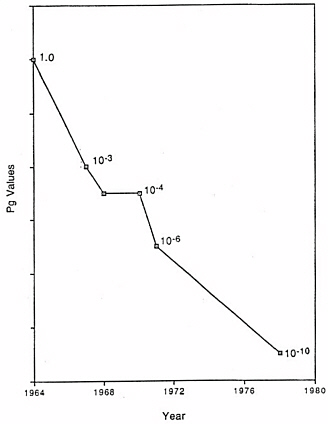D
History of Recommended Values for Probability of Growth
Historically, the approach used to evaluate planetary protection requirements for spacecraft sent to Mars depended on efforts to estimate the probability Pg that Earth microorganisms would grow in the martian environment (see Chapter 2). As shown in Figure D.1, estimates of Pg varied by ten orders of magnitude during the period from 1964 to 1978. As the committee discusses in Chapter 5, the scientific basis for estimates of Pg—knowledge about the capability of Earth microorganisms to survive and propagate on Mars—remains strongly limited.

FIGURE D.1 Estimates of the probability of growth (Pg) of Earth microorganisms on the planet Mars. SOURCE: H.P. Klein. 1992. History of Pg. Pp. 41-52 in Planetary Protection Issues for the MESUR Mission: Probability of Growth (Pg), H.P. Klein, ed. NASA CP 3167. NASA, Washington, D.C.

